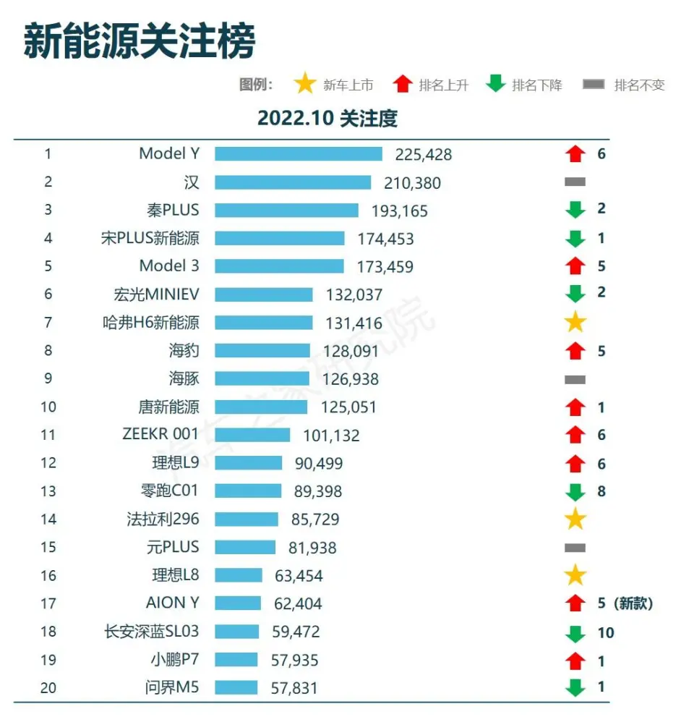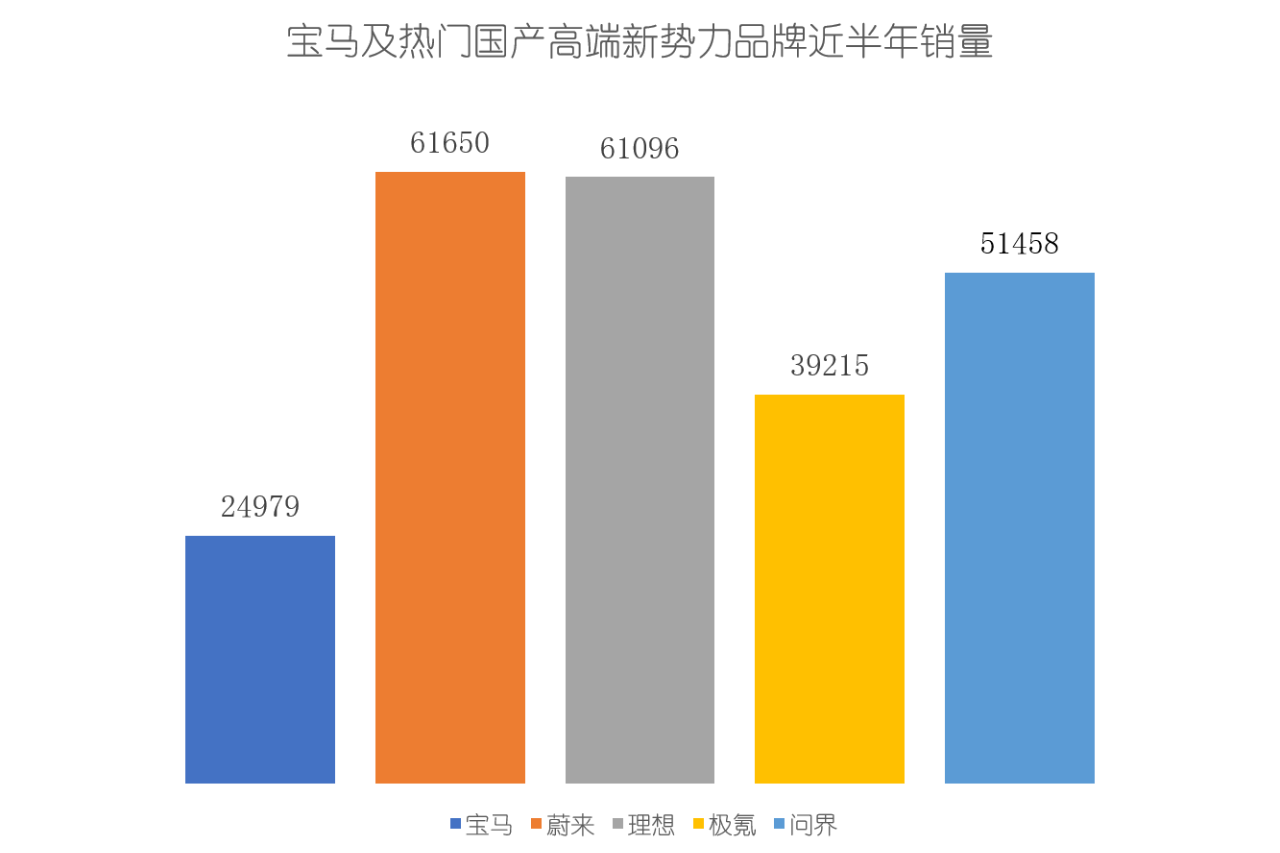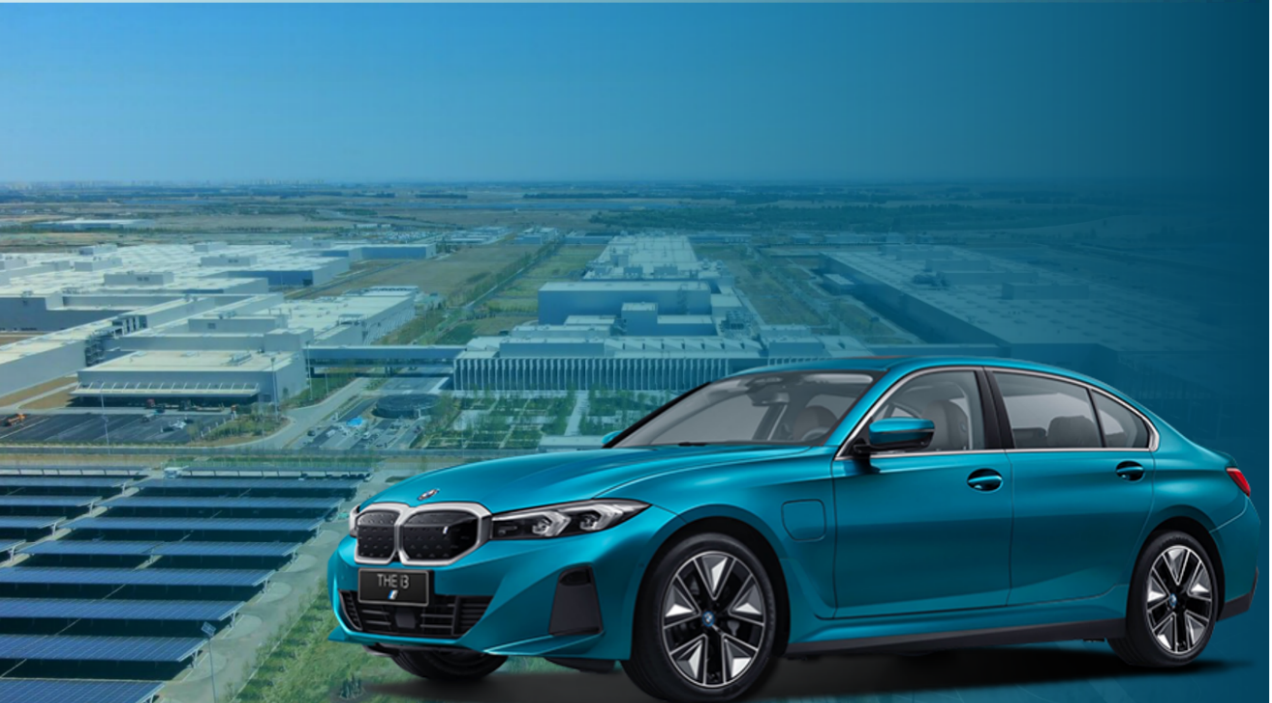Author: Zhang Yi
“In BMW’s view, there is still enormous potential for bilateral connections and cooperation between China and Germany, which will be further deepened, developed, and enhanced. Both sides’ companies will have more opportunities for cooperation. I am confident in this.” Qu Zhipeng, Chairman of the BMW Group, expressed this recently with German Chancellor Scholz’s visit to China.
Undoubtedly, positive signals have been released between China and Germany, but BMW’s prospects in China are not necessarily optimistic, as shown by a set of data.

Relevant surveys have shown that among the top 20 new energy vehicle models that Chinese users were most concerned about in October, 17 of them belonged to domestic brands, while only 3 belonged to foreign brands—Model Y, Model 3, and Ferrari 296. The first two are popular on the market, while the latter is always the top stream.
Obviously, as the Chinese automobile market shifts towards new energy conservation and emission reduction, and the speed of adoption accelerates, foreign brands such as BMW that were once at the forefront of the automotive industry are now caught in the middle and face the awkward situation of gradually being marginalized.
BMW’s weak transformation towards electrification has given domestic brands the opportunity to overtake them in the high-end automobile market through new energy vehicle models. The high-end brand landscape in the Chinese automobile market is undergoing a reshuffle.
We can each ask ourselves a question: if we were going to buy a high-end new energy car that cost more than RMB 300,000, would we think of BMW immediately? And when we think of “experience,” “intelligence,” and “autonomous driving,” will BMW come to mind first?
If not, then who would? In domestic brands, it’s probably NIO, Ideal, XPeng, Jinkesai, or NIOjun, while in foreign brands, Tesla is undoubtedly the first choice.
Of course, everyone has their own answer, and the market will sort out the answers of those who have already turned in their homework and present them.
In October, BMW’s new energy vehicle models sold a total of 5136 vehicles, with the highest sales being the iX3, which only sold 2592 units. In the past six months, sales were only 24,979, far lower than that of domestic high-end brands like NIO and Ideal.
When the experience of driving a car undergoes a revolutionary change, the rise of domestic Chinese brands in the new energy vehicle market has made it increasingly uncertain for BMW, which is accustomed to the driving dividend, to enter the era of new energy vehicles in China. However, at the same time, the future of the Chinese automobile market has become more and more appealing.
The latest data shows that the Chinese automobile market share has reached 32% worldwide, and its influence on the global automobile market is increasing. In the new energy vehicle market, the proportion of Chinese new energy vehicle sales to the global market has surpassed 70%, and the Chinese new energy vehicle market is dominating the world with an absolute advantage.
Therefore, for BMW, despite the increasingly chilly atmosphere and the uncertainty of the surrounding environment, facing the wave of future electrification, the success of BMW’s electrification transformation in the Chinese market is almost equivalent to global success. Therefore, BMW intends to continue to increase its investment to win the Chinese market.
In 2021, BMW proposed the “Home in China” strategy, which is to take China as a foundation and radiate BMW’s power to the world, especially in the electrification transformation. From a strategic perspective, it further raised the level of attention to the Chinese market.
This year, BMW upgraded its products in the Brilliance BMW Dadong factory in April; then, the BMW Brilliance Tiexi factory, which mainly produces BMW i-series models and was funded with 15 billion yuan, officially opened in June; and on November 11th, Brilliance BMW also joined the “shopping spree” and invested 10 billion yuan to launch the power battery project’s expansion. Next year, the production line of MINI will also be completely transferred from its hometown Oxford factory in the UK to China. According to relevant data statistics, from 2010 to now, BMW’s cumulative investment in China has reached 83 billion yuan.
The continuous and large-scale investments indicate that, although BMW faces great resistance in turning its ship around towards electrification transformation, it has never relaxed its attention to the Chinese market.
 However, high investment also means high risk. As mentioned earlier, BMW’s embarrassing situation of not being able to integrate into the mainstream new energy vehicle brands has made its approach of continuously increasing investment in China more and more like dancing on the edge of a knife. Currently, the huge investment has not brought BMW the expected returns. Instead, it is facing besiegement from domestic brands and Tesla with increasingly weak sustainability.
However, high investment also means high risk. As mentioned earlier, BMW’s embarrassing situation of not being able to integrate into the mainstream new energy vehicle brands has made its approach of continuously increasing investment in China more and more like dancing on the edge of a knife. Currently, the huge investment has not brought BMW the expected returns. Instead, it is facing besiegement from domestic brands and Tesla with increasingly weak sustainability.
Li Xiang once posted on Weibo, “By the end of 2024 at the latest, the main sales price of BBA’s domestically produced mid-to-large SUV models will be lower than RMB 500,000. Consumers will be the biggest beneficiaries.”
Sure enough, Li Xiang’s words have come true. On November 15th, Mercedes-Benz EQ series officially announced price reductions, including the EQE, which originally sold for RMB 528,000-585,000, now adjusted to RMB 478,000-534,300. Li Xiang’s words are gradually becoming a reality.
If Mercedes-Benz could not withstand it, can BMW be far behind?
In any case, facing the huge Chinese market, BMW’s continuing approach of increasing investment is certainly the correct choice. However, BMW should realize that winning the Chinese market is not only winning the global market, but also losing the Chinese market or even the entire global market.
Under huge bets, there is no middle ground. BMW can only choose to move forward.
To return to the forefront of public opinion in the new energy era, BMW not only needs to strengthen its relevant industrial layout, but also to promptly follow up on brand marketing and even the adjustment of internal organizational structure facing the new customer group.
In the era of fuel vehicles, there was still “Drive a BMW, ride a Mercedes-Benz”; what about in the new energy era? BMW seems to have not left any traces. For a consumer product, this is undoubtedly a dangerous signal.
Now, BMW needs a hit product that can stand its ground in the new energy vehicle market. Otherwise, without continuous returns, BMW will be unable to justify itself to both its internal and external stakeholders.
Finally, the reshuffle of the high-end brand landscape also means the intensification of competition in the high-end auto market. Although BMW increasing investment in China is risky to itself, from another perspective, the intensification of competition is driving major brands to constantly brainstorm ways to please users. In the end, whether it is a domestic brand victory comeback or a foreign joint venture’s continued success, the ultimate beneficiaries will be the users.
This article is a translation by ChatGPT of a Chinese report from 42HOW. If you have any questions about it, please email bd@42how.com.
